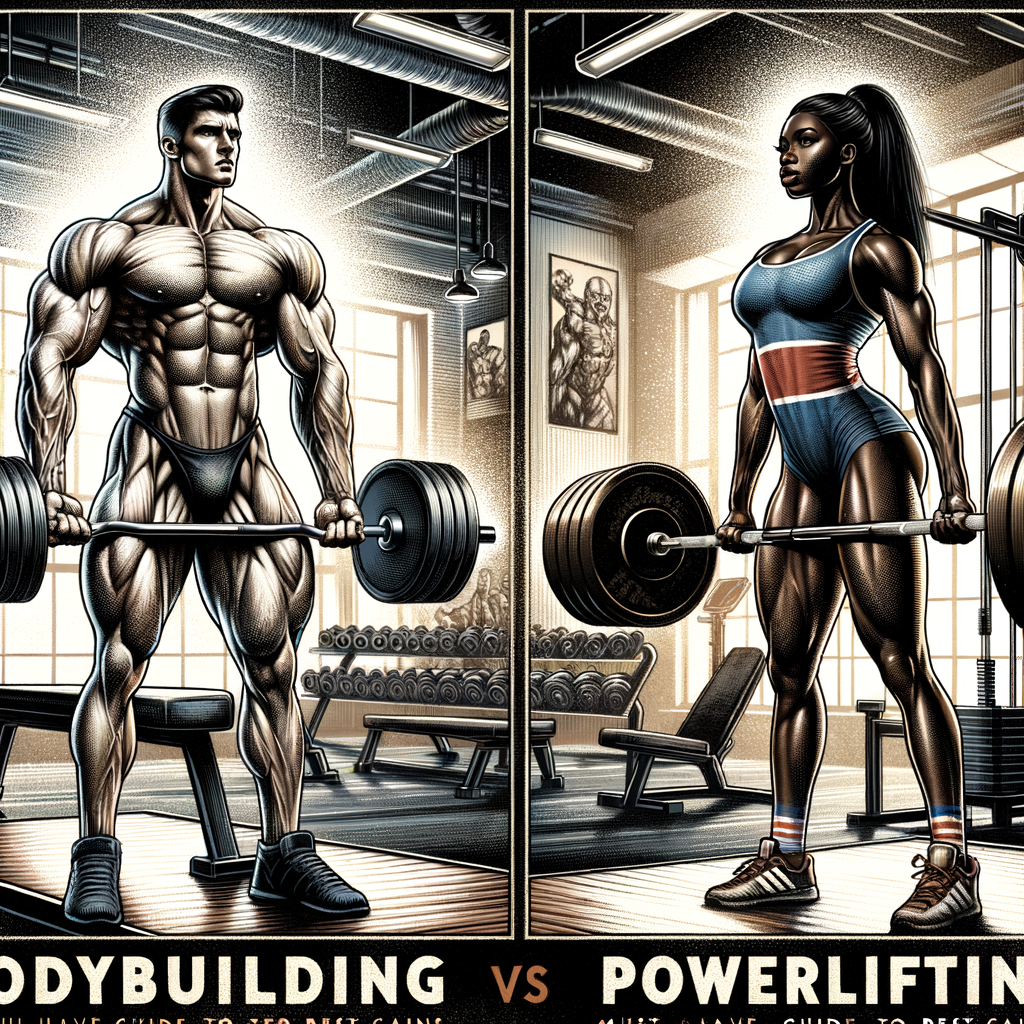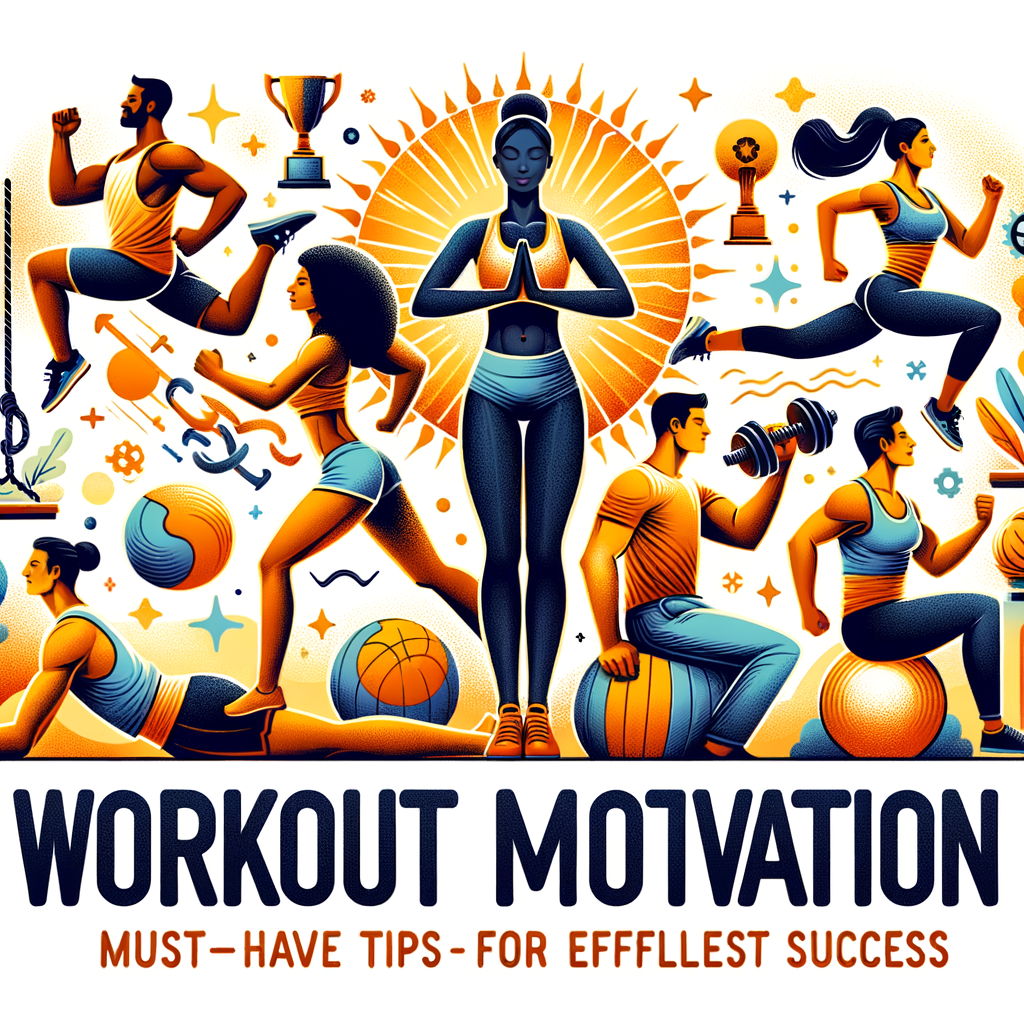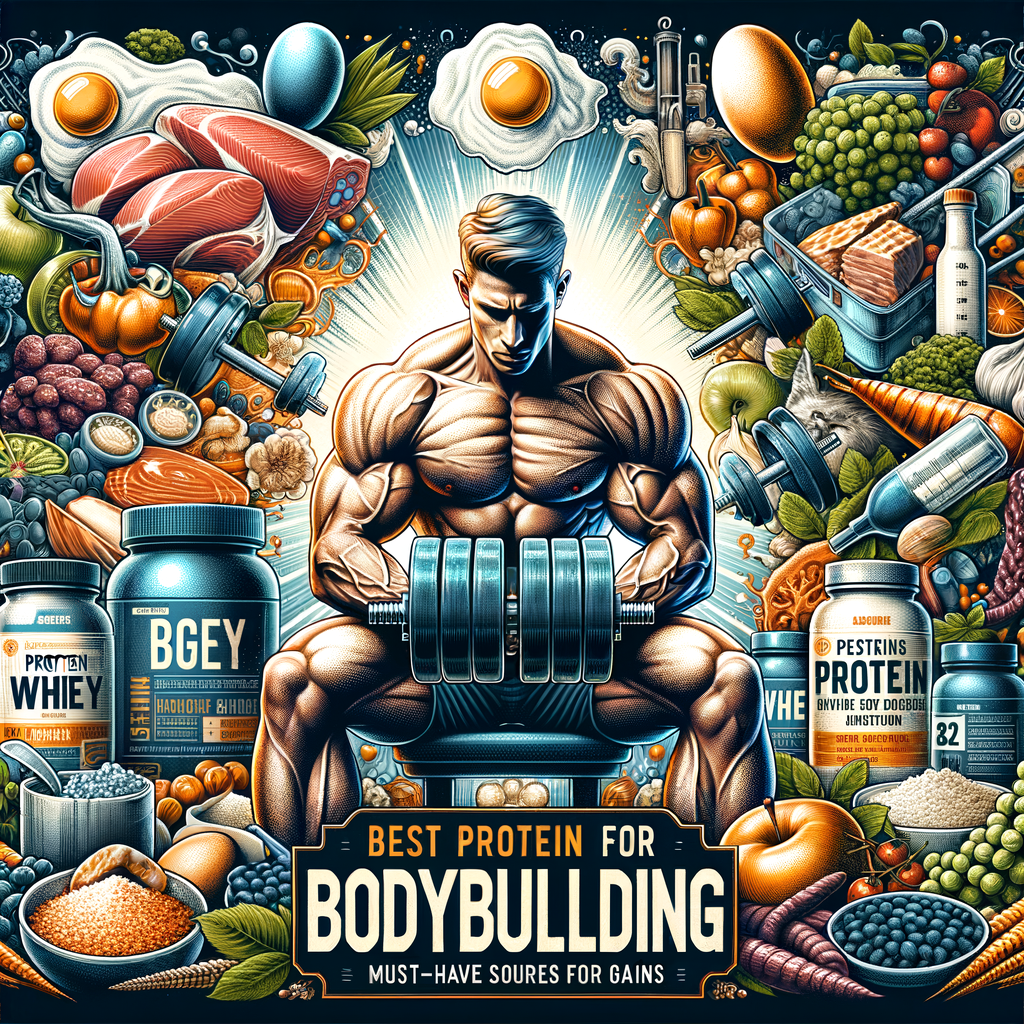- What Is Bodybuilding?
- What Is Powerlifting?
- Key Philosophical Differences
- Training Variables: Volume, Intensity, and Frequency
- Exercise Selection and Technique
- Progression and Periodization
- Typical Workout Split Examples
- Reps, Sets, and Intensity Ranges
- Nutrition: Calories, Macronutrients, and Timing
- Supplements: What Helps Each Sport
- Recovery: Sleep, Stress, and Autoregulation
- Injury Risk and Management
- Competition Differences
- Psychological and Lifestyle Factors
- Who Should Choose Bodybuilding?
- Who Should Choose Powerlifting?
- Hybrid Approaches: Best of Both Worlds
- Sample 8-Week Powerbuilding Program (Table)
- Programming Tips: Practical Guidance
- Common Mistakes and How to Avoid Them
- Measuring Progress: Metrics for Each Sport
- Gear and Equipment Differences
- Cost and Time Commitment
- Transitioning Between Sports
- Case Studies: Real-World Examples
- Which Delivers Faster Visible Results?
- Community and Culture
- Long-Term Health Considerations
- Choosing the Right Coach or Program
- Practical Next Steps for Beginners
- Summary: Which One Is Best for Gains?
- Practical Comparison Table
- 10 FAQs
- References
Introduction
Bodybuilding Vs Powerlifting sparks debate in gyms and online forums. Both camps chase strength, size, and athletic pride. Yet they use different methods, priorities, and mindsets.
This guide helps you compare both sports. You will learn clear differences in training, nutrition, recovery, and competition. Ultimately, you can decide which route fits your goals best.
What Is Bodybuilding?
Bodybuilding focuses on creating balanced, lean, and muscular physiques. Athletes emphasize muscle size, symmetry, and definition more than sheer strength. They sculpt their bodies to look proportionate under stage lights.
In practice, bodybuilders use varied isolation and compound lifts. They manipulate sets, reps, and tempo to target muscle growth. Also, they cycle between bulking and cutting phases to add size and then reveal definition.
What Is Powerlifting?
Powerlifting centers on maximal strength in three lifts: squat, bench press, and deadlift. Athletes aim to lift the heaviest weight possible for a single repetition. Technique and nervous system adaptation take priority.
Powerlifters train with lower reps and heavier loads than bodybuilders. They often follow periodized plans that peak for competition. Strength, not aesthetics, determines success in this sport.
Key Philosophical Differences
First, bodybuilders prioritize appearance and proportion. They train to develop lagging muscles and reduce body fat. Conversely, powerlifters prioritize moving maximal loads efficiently.
Second, bodybuilders value muscle pump, metabolic stress, and time under tension. Powerlifters value neural drive, technique, and recovery between heavy sets. As a result, they use different exercise choices and progressions.
Training Variables: Volume, Intensity, and Frequency
Bodybuilders generally use higher training volume. They perform more sets for each muscle group. They also use moderate weights and rep ranges from 6 to 15.
Powerlifters use higher intensity with lower reps. They often train at 80–95% of their one-rep max. Their frequency varies, but many hit the main lifts multiple times weekly.
Moreover, both can overlap in tactics. For example, a lifter could use hypertrophy weeks to increase muscle cross-sectional area. Later, they can convert that to strength gains through heavy training blocks.
Exercise Selection and Technique
Bodybuilders include many isolation movements. They use machines, cables, and dumbbells to sculpt specific muscles. They also perform compound lifts but often with higher reps and varied angles.
Powerlifters focus on squat, bench, and deadlift variations. They also include accessory work that directly supports those lifts. Technique drills, pause reps, and heavy singles feature in their routines.
Progression and Periodization
Bodybuilders frequently cycle through phases that emphasize hypertrophy and conditioning. They may use progressive overload through volume or load increases. They treat deloads as recovery and performance resets.
Powerlifters follow structured periodization to peak for meets. They ramp intensity and taper volume before competition. They also plan microcycles around heavy attempts and technical work.
Typical Workout Split Examples
Here are common split templates each sport uses.
Bodybuilding:
– Push/Pull/Legs split for balanced frequency.
– Chest/Back/Legs/Shoulders/Arms splits for focused specialization.
Powerlifting:
– Upper/Lower with main lift focus on each day.
– Squat/Bench/Deadlift rotation across the week.
These templates adapt to experience level and recovery capacity. You can mix elements from both to suit personal needs.
Reps, Sets, and Intensity Ranges
Bodybuilding zones:
– 6–15 reps per set for most exercises.
– 3–6 sets per exercise.
– Occasional high-rep work for conditioning.
Powerlifting zones:
– 1–5 reps for main lifts.
– 3–8 sets for heavy work.
– Accessory lifts in 6–12 rep range to build volume.
Both approaches use variation over time to prevent plateaus. Importantly, you must match load and volume to recovery capacity.
Nutrition: Calories, Macronutrients, and Timing
Bodybuilding relies on precise calorie and macronutrient control. Athletes track intake to gain muscle or shed fat efficiently. They use higher protein intake, moderate carbs, and controlled fats.
Powerlifters prioritize performance-based fueling for heavy sessions. They often eat more during strength phases to support neural recovery. Carbohydrates receive emphasis pre- and post-training for optimal output.
Regardless of sport, protein matters. Aim for 1.6–2.2 g/kg bodyweight daily. Adjust calories based on goals: surplus for gains, deficit for fat loss. Also, time carbs around workouts to improve session quality.
Supplements: What Helps Each Sport
Common effective supplements overlap between both sports. Creatine monohydrate boosts strength and supports high-intensity work. Protein powders help you meet daily protein goals conveniently.
Bodybuilders may add branched-chain amino acids and fat burners during cutting. Powerlifters use pre-workouts for CNS stimulation and beta-alanine for endurance. Still, most gains depend on training and diet, not pills.
Simple supplemental stack for both:
– Creatine monohydrate: 3–5 g/day
– Protein powder: as needed to meet targets
– Caffeine: 3–6 mg/kg before workouts
– Vitamin D and fish oil: for general health
Recovery: Sleep, Stress, and Autoregulation
Sleep profoundly affects both sports. You need 7–9 hours for growth and neural recovery. Poor sleep reduces strength, increases injury risk, and slows progress.
Autoregulation helps you manage daily variance in recovery. Use RPE, bar speed, or heart rate to adjust volume and intensity. Additionally, schedule deload weeks to avoid overtraining.
Injury Risk and Management
Powerlifting carries a higher risk of acute joint and spinal overload. Heavy singles and maximal attempts stress connective tissue. However, good technique and gradual progression reduce injury risk.
Bodybuilding risks often stem from repetitive stress and poor balance. Overuse of isolation lifts and imbalanced programming can cause issues. Regular mobility work and balanced accessory training help prevent problems.
Competition Differences
Bodybuilding competitions judge aesthetic qualities. Judges evaluate muscle mass, symmetry, conditioning, and stage presentation. Competitors follow strict dieting and posing routines before show day.
Powerlifting competitions judge one-rep max performance. Lifters perform squat, bench press, and deadlift attempts. Meet success depends on total weight and strategic attempt selection.
Psychological and Lifestyle Factors
Bodybuilding demands strict dieting and body composition control. Contest prep can stress social life due to rigid meal plans. Yet the process builds discipline and self-awareness.
Powerlifting requires mental focus for heavy lifts. You need confidence to push near maximal loads. Many lifters enjoy the simple, measurable progress of strength numbers.
Who Should Choose Bodybuilding?
Choose bodybuilding if you want a sculpted, athletic look. Also choose it if you enjoy varied training and muscle-targeted work. If you like measuring progress by how you look, bodybuilding fits well.
Moreover, consider bodybuilding if you enjoy stage performance and artistic posing. Remember that dieting phases can challenge social and mental balance. Still, many find the aesthetic goal highly motivating.
Who Should Choose Powerlifting?
Choose powerlifting if you enjoy lifting heavy and tracking raw numbers. Powerlifting suits those who crave measurable performance milestones. If you prefer fewer exercise variations, this sport fits nicely.
Also choose powerlifting if you want quick improvements in maximal strength. You will test technical consistency and mental grit. Competition can add structure and purpose to training.
Hybrid Approaches: Best of Both Worlds
You can blend bodybuilding and powerlifting effectively. Many athletes follow powerbuilding programs that combine heavy compound lifts with hypertrophy work. This approach builds strength and muscle simultaneously.
For example, train main lifts heavy twice weekly, then add accessory hypertrophy sets. This method improves raw strength while increasing muscle size. It also gives varied training stimulus to prevent boredom.
Sample 8-Week Powerbuilding Program (Table)
Below is a concise template to build both strength and size.
| Day | Focus | Example Exercises |
|—–|——-|——————-|
| Mon | Heavy Squat | Squat 5×5, Bulgarian split squat 3×8, Leg curl 3×12 |
| Tue | Bench Strength | Bench press 5×5, Close-grip bench 3×6, Pec fly 3×12 |
| Thu | Deadlift/Posterior | Deadlift 3×5, Romanian deadlift 3×8, Back extensions 3×12 |
| Fri | Hypertrophy Upper | Incline DB press 4×10, Rows 4×10, Lateral raise 3×15, Biceps/triceps 3×12 |
Progress by increasing load or reps each week. Use one deload week after 6–8 weeks.
Programming Tips: Practical Guidance
First, prioritize compound lifts for long-term gains. They recruit more muscle and allow heavier loads. Second, track your numbers regularly to guide progression.
Third, include accessory work to strengthen weak points. Fourth, cycle intensity and volume to avoid burnout. Finally, listen to your body and adjust using autoregulation methods.
Common Mistakes and How to Avoid Them
Mistake: Chasing heavy weight at the expense of technique. Fix: Slow down and prioritize form. Use lighter weights to train movement patterns.
Mistake: Neglecting recovery and sleep. Fix: Schedule deloads and plan consistent sleep habits. Mistake: Over-restricting calories for aesthetics or weight classes. Fix: Use slower body composition changes to preserve strength.
Measuring Progress: Metrics for Each Sport
Bodybuilding metrics:
– Body fat percentage
– Circumference measurements
– Progress photos and posing assessment
Powerlifting metrics:
– One-rep max on squat, bench, deadlift
– Bar speed and RPE scores
– Competition totals and rankings
Use objective metrics alongside subjective feelings. Both quantitative and qualitative feedback guide training adjustments.
Gear and Equipment Differences
Bodybuilders use moderate gear: lifting shoes, belts, and straps sometimes. They also use machines and cable setups for isolation work. Their gear aims at muscle control and safety.
Powerlifters often use specialized equipment: squat suits, bench shirts, and lift-specific belts. They train with heavier bars and competition-style gear. This equipment supports maximal performance and joint safety during heavy loads.
Cost and Time Commitment
Bodybuilding often requires more time in the kitchen for meal prep and food tracking. It also demands longer training sessions when performing high volume. Additionally, contest prep can add dietician or coach costs.
Powerlifting requires meticulous technique coaching and possibly specialized gear purchases. Training sessions can be shorter if you focus on heavy compound work. However, recovery demands and meet travel add time and cost.
Transitioning Between Sports
If you switch from bodybuilding to powerlifting, prioritize neural adaptation. Reduce overall volume and increase heavy singles. Re-learn technical positions for the squat, bench, and deadlift.
If you switch from powerlifting to bodybuilding, increase volume and muscle isolation work. Focus on muscle mind connection and hypertrophy rep ranges. Also, adjust nutrition to manage body composition more precisely.
Case Studies: Real-World Examples
Example one: An amateur bodybuilder added heavy compound weeks to break a plateau. Within 12 weeks, they increased size and retained definition. They avoided the burnout that often follows relentless isolation work.
Example two: A novice powerlifter added hypertrophy blocks. They improved muscle mass, which translated to higher competition numbers. This showed that strength and size can support each other.
Which Delivers Faster Visible Results?
Powerlifting often yields quick improvements in strength. You will see barbell numbers rise within weeks. However, those changes may not translate into dramatic visual differences.
Bodybuilding produces visible physique changes over months. Muscle hypertrophy requires consistent volume and nutrition. Thus, visual rewards appear more gradually, but they become striking over time.
Community and Culture
Bodybuilding culture emphasizes aesthetics, posing, and diet discipline. Social media often highlights transformation photos and contest prep. The community can be critical, but it also offers strong motivation.
Powerlifting culture centers on performance, raw effort, and support during heavy attempts. Gyms often cheer lifters during maximal lifts. The sport fosters camaraderie through meets and informal competitions.
Long-Term Health Considerations
Both sports can benefit long-term health when done sensibly. Strength training supports bone density, metabolic health, and mobility. More so, varied resistance training reduces injury risk with age.
However, extreme dieting or performance drug misuse can harm health. Prioritize sustainable approaches, proper medical checkups, and sound coaching. Balance performance goals with a long-term wellness perspective.
Choosing the Right Coach or Program
Look for coaches with proven experience in your chosen sport. Check client transformations and competition results. Also, prefer coaches who explain programming and adapt plans.
Ask potential coaches about recovery strategies, nutrition, and periodization. Finally, ensure their communication style fits your personality and learning preferences.
Practical Next Steps for Beginners
First, define your main goal: look better or lift heavier. Second, choose a basic program that aligns with that goal. Third, track training, nutrition, and recovery to measure progress.
Additionally, learn core lifts with light weights to build technique. Consider a coach or experienced training partner for feedback. Lastly, set realistic milestones and celebrate small wins.
Summary: Which One Is Best for Gains?
Bodybuilding Vs Powerlifting depends on how you define gains. For visible muscle size and symmetry, bodybuilding leads. For maximal strength and performance, powerlifting wins.
Yet the best gains often come from blending both. Powerbuilding combines hypertrophy and heavy lifting. This hybrid approach suits many lifters who want the best of both worlds.
Practical Comparison Table
| Aspect | Bodybuilding | Powerlifting |
|——–|————–|————–|
| Primary goal | Aesthetics and muscle size | Maximal strength |
| Main lifts | Many compounds + isolation | Squat, bench, deadlift |
| Rep ranges | 6–15 reps common | 1–5 reps for main lifts |
| Volume | High | Moderate to high on accessories |
| Nutrition focus | Body composition control | Performance fueling |
| Competition | Posing, physique judging | Max single-rep attempts |
| Best for | Visual transformation | Strength milestones |
This table highlights clear contrasts. Use it to choose your training focus or hybridize.
10 FAQs
1) Can I build both muscle and strength at the same time?
Yes. Beginners often gain both simultaneously. Advanced lifters can also through periodized blocks combining hypertrophy and heavy strength work.
2) How long until I see noticeable gains?
Beginners may see strength changes in weeks and muscle changes in 6–12 weeks. Advanced trainees require longer blocks and precise programming to see further gains.
3) Should I bulk then cut or stay lean year-round?
Bodybuilders often bulk then cut. For powerlifters, a slight surplus during strength phases helps performance. Staying lean year-round works if you prefer steady appearance and health.
4) Is steroid use common in either sport?
Some individuals use performance-enhancing drugs in both sports. However, many athletes remain drug-free. Always prioritize health and legal competition rules.
5) How often should I train each muscle group?
Bodybuilders typically train each muscle 2–3 times per week. Powerlifters hit main lifts 2–4 times per week. Frequency depends on volume, recovery, and experience.
6) Will heavy lifting make me bulky?
Not necessarily. Heavy lifting increases strength and muscle density. Bulk requires consistent calorie surplus and high volume hypertrophy work.
7) How important is cardio for both sports?
Moderate cardio aids conditioning and heart health. Bodybuilders use cardio more during cutting phases. Powerlifters use cardio sparingly to preserve recovery.
8) Can women follow the same principles?
Absolutely. Women respond similarly to strength and hypertrophy training. They should adjust programming and nutrition to individual needs and goals.
9) Which is better for fat loss?
Bodybuilding-style training combined with calorie control often produces more visible fat loss. Powerlifting maintains strength but may require careful caloric deficits to lose fat without sabotaging performance.
10) How do I pick a meet or show to start?
Choose local meets or shows for your first attempt. They tend to be less intimidating and more supportive. Also, work with a coach familiar with competition rules and prep.
References
– Schoenfeld, B. J. (2010). The Mechanisms of Muscle Hypertrophy and Their Application to Resistance Training. Journal of Strength and Conditioning Research. https://journals.lww.com/nsca-jscr/fulltext/2010/10000/the_mechanisms_of_muscle_hypertrophy_and_their.40.aspx
– Ralston, G. W., Kilgore, L., Wyatt, F. B., & Baker, J. S. (2018). The Effect of Weekly Set Volume on Strength Gain. Sports, 6(3). https://www.mdpi.com/2075-4663/6/3/8
– Grgic, J., Schoenfeld, B. J., Davies, T. B., Linos, Z., & Morton, R. W. (2019). Effects of Range of Motion on Muscle Strength and (Incomplete: max_output_tokens)



